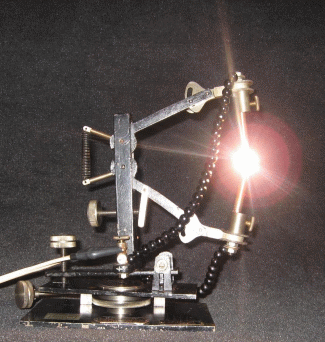Today (October 31, 1828) is the birthday of Joseph Wilson Swan, the inventor of the first vacuum light bulb.
Joseph Wilson Swan was born on October 31, 1828, in Ballion Hall, Bishop'smouth Parish, Sunderland, County Durham. His parents were John Swan and Isabella Cameron. Joseph Swan excelled in his family poverty and excelled in both physics and chemistry. Swan trained with the Sunderland Pharmaceutical Company, Hudson and Asphaltiston. It is unknown at this time what he will do after leaving the post. He enhanced his education through his surroundings, the industry of the area and reading at the Sunderland Library. He attended lectures at Sunderland Athenaeum. Swan later joined a pharmaceutical company in Tyne as a trainer. He later became a partner in a chemical company called Mawson.
In 1850, Swan began working on a
light bulb using carbonized paper fibres in an emitting glass lamp. By 1860, he
was able to demonstrate a working device. But the lack of a good vacuum and
adequate power source resulted in an inefficient light bulb with a short
lifespan. In August 1863 he presented his own design for a vacuum pump at a
meeting of the British Society for Scientific Advancement. This system was used
to capture air from the system to expel the mercury that fell through a pipe.
Swan's design was similar to the construction of the Sprinkle pump. Presents
the research of Herman Sprinkle two years ago. Also, it is noteworthy that
Sprengel carried out his research during a visit to London. Also, be aware of
the annual reports of the British Association for Scientific Advancement.
Nevertheless, Joseph Swan and Thomas Edison are said to have later used the
Sprinkle pump to emit carbon fibre lamps.


In 1875, Swan returned with the
help of an excellent vacuum to consider the problem of a lamp. The most
important feature of Swan's upgraded lamp was that there was less residual
oxygen to burn the filament in the vacuum tube. Thus allowing the fibre to glow
almost white-hot without catching fire. However, his fibre had low resistance.
Thus heavy copper wires were required to supply it. Swan first demonstrated his
incandescent carbon bulb publicly on December 18, 1878, in a lecture at the
Aben Dine Chemical Society in Newcastle. However, after a few minutes in his
lab with a bright light, the lamp broke due to excessive current. On January
17, 1879, this discourse was successfully repeated with the light shown in the
actual process. Swan solved the problem of incandescent electric lights with a
vacuum lamp. On February 3, 1879, he publicly presented a lamp presentation to
more than seven hundred spectators at Aben Dine's lecture hall in Newcastle,
Literary and Philosophical Society. But it was not until 1880 that the electric
light he invented was patented.

Headed by Sir William Armstrong
of Croxite. Swan turned his attention to making excellent carbon fibre. And
instructions for connecting its ends. He devised a method of treating cotton to
make "parchment yarn". He also received British Patent 4933 on
November 27, 1880. Since then he has started installing light bulbs in homes
and signs in the UK. In 1881, at the Savoy Theater in Westminster, London, Swan
lit his lamp with electricity. This is the first time in the world that
electric lights have been lit in theatres and public theatres. In 1904, Joseph Swan
was conferred the title of 'Sir' by King Edward VII of England. The Royal
Society of England was awarded the 'Hooks Medal'.

The Parachute Society accepts
Joseph Swan as an honorary member. It is noteworthy that the French government
bestowed the title of Légion d'honneur. It featured Joseph Swan's discoveries
at an international exhibition in Paris in 1881. And thanks to this invention
Swan lit up the entire city of Paris with electric lights. Joseph Wilson Swan,
the first inventor of the vacuum light bulb for electric lighting, passed away
on May 27, 1914, in Worlingham, Surrey, England, at the age of 85. In 1945, the
London Power Company acquired a new 1,554 GRT Coastal Collier SS. Named Sir
Joseph Swan and commemorated Swan.
Source By: Wikipedia
Information: Dr. P. Ramesh, Assistant Professor of Physics, Nehru Memorial College, Puthanampatti, Trichy.





.jpg)
No comments:
Post a Comment